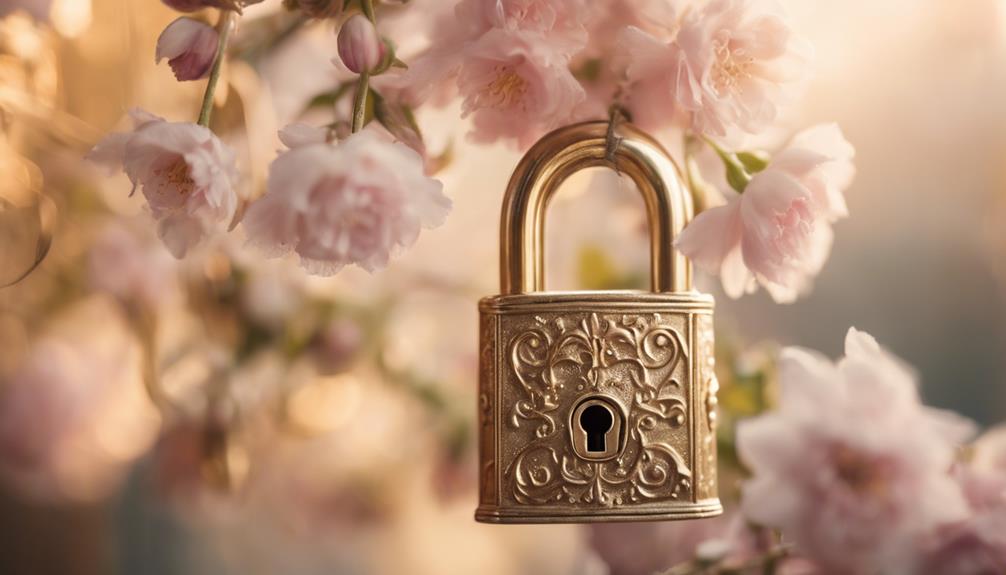Recognizing red flags versus green flags helps you gauge relationship health. Red flags include controlling behavior, dishonesty, dismissiveness, and boundary violations, signaling potential harm. Green flags show honest communication, respect, support, and consistency, indicating a healthy connection. Pay attention to recurring patterns over isolated incidents, trusting your instincts. Understanding these signs allows you to make better choices about your relationships. Keep exploring to learn more about how to identify and nurture healthy bonds.
Key Takeaways
- Red flags include controlling behavior, dishonesty, and boundary violations, while green flags involve honesty, respect, and open communication.
- Recognize recurring patterns of disrespect versus consistent supportive actions to assess relationship health.
- Trust your instincts when red flags appear, and look for mutual trust and reliability as indicators of a healthy relationship.
- A healthy relationship promotes active listening, respect for boundaries, and support for personal growth; unhealthy ones often lack these qualities.
- Use resources on relationship dynamics to identify positive signs and avoid potential harm from negative behaviors.

Have you ever wondered how to tell if someone’s behavior is a warning sign or a sign of a healthy relationship? It’s not always easy to tell, especially when emotions cloud your judgment. Recognizing red flags and green flags helps you better understand whether your relationship is built on mutual respect and trust or if it’s headed toward trouble. Red flags are signals that something’s off—things that should make you pause and evaluate. Green flags, on the other hand, are signs that things are healthy, supportive, and positive. Knowing the difference can save you from investing in a relationship that’s unhealthy and help you nurture one that’s truly good for you.
Recognizing red and green flags helps you identify healthy relationships and avoid potential harm.
Red flags often show up through controlling behavior, manipulation, or a lack of respect. If your partner constantly criticizes you, dismisses your opinions, or tries to control who you see and what you do, those are clear warning signs. Similarly, if they’re dishonest, secretive, or dismiss your feelings, it’s a sign that trust isn’t being built or maintained. Red flags also include inconsistency—like saying one thing but doing another—making you feel confused or unsure. Another major warning sign is if they dismiss your boundaries or make you feel unsafe. If your gut tells you something’s wrong, it probably is. Trust your instincts and pay attention to patterns of behavior, not just isolated incidents. Recognizing these patterns can be crucial in understanding the overall health of your relationship. Additionally, understanding relationship dynamics can help you better identify these positive signs and nurture them. Being aware of vetted relationship behaviors can further empower you to make informed decisions about your emotional well-being.
Green flags are the opposite—they indicate a relationship rooted in honesty, support, and mutual respect. When your partner listens to you, values your opinions, and respects your boundaries, they’re demonstrating healthy behavior. Someone who communicates openly and calmly, especially during disagreements, shows maturity and a willingness to work through issues together. A green flag also appears when both of you support each other’s growth, celebrate successes, and comfort each other during tough times. Trust and reliability are key indicators; if your partner consistently shows up for you and keeps their promises, it’s a good sign. Respecting your independence and encouraging your interests also signal a healthy relationship. Additionally, understanding safe sleep environments can help you better identify these positive signs and foster them. Appreciating the importance of mutual trust and fostering open communication creates a foundation of trust and mutual care in the relationship. Recognizing these green flags can help you build a supportive and lasting partnership.
Frequently Asked Questions
How Can I Differentiate Between Minor Issues and Serious Red Flags?
When trying to tell minor issues from serious red flags, pay attention to patterns, not just isolated incidents. Minor disagreements are normal, but if you notice controlling behavior, disrespect, or repeated dishonesty, those are red flags. Trust your instincts—if something feels consistently wrong or makes you uncomfortable, it’s worth addressing or reconsidering the relationship. Remember, healthy relationships respect boundaries and foster open communication.
Are There Cultural Differences in What Constitutes Red or Green Flags?
Think of relationships as a tapestry; what’s a red flag in one culture might be a green flag in another. Cultural norms shape what we see as healthy or unhealthy, so be mindful of different traditions and expectations. You might find that honesty, respect, and support are universal, but how they’re expressed varies. Recognize these differences to truly understand what’s a red or green flag in your unique cultural context.
When Should I Seek Professional Help for Relationship Concerns?
You should seek professional help when relationship concerns start affecting your mental health, daily life, or self-esteem. If communication becomes consistently strained, or if you experience ongoing conflicts, emotional or physical abuse, don’t hesitate to reach out for support. A counselor or therapist can offer guidance, help you understand patterns, and develop healthier ways to connect, ensuring your well-being is prioritized and protected.
Can a Relationship Have Both Red and Green Flags Simultaneously?
Yes, your relationship can have both red and green flags at the same time. You might experience healthy communication and mutual respect (green flags), but also notice some warning signs like inconsistency or controlling behaviors (red flags). It’s important to recognize these mixed signals and reflect on how they impact your well-being. Pay attention to patterns over time, and consider seeking support if red flags start outweighing the green ones.
How Do I Rebuild Trust After Identifying Red Flags?
Trust can feel shattered, but rebuilding is possible with patience and honesty. You start by openly communicating your feelings and setting clear boundaries, showing you’re committed to change. While it’s tough to forgive past hurts, focusing on consistent, trustworthy actions helps heal wounds. Remember, rebuilding trust takes time—each small step demonstrates your dedication to creating a healthier relationship, even after red flags.
Conclusion
By learning to read the subtle signals—the dark clouds of red flags and the shining stars of green flags—you become the navigator of your own emotional voyage. Trust your intuition as your compass, guiding you through stormy seas or calm waters. Remember, healthy relationships bloom like resilient flowers in sunlight, while unhealthy ones wither in shadows. Stay vigilant, cherish the signs that illuminate your path, and steer confidently toward love’s true, nourishing horizon.









